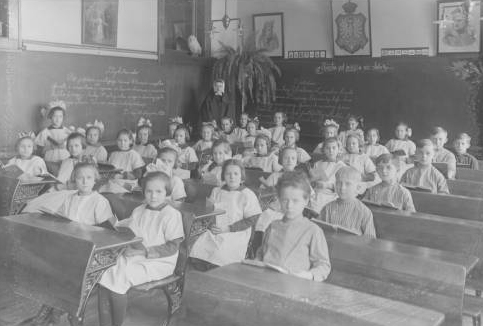
Milwaukee’s Polish-American community established numerous Roman Catholic parishes, each of which had its own parochial school. At first, the curriculum was intended only to prepare children for their First Communion, but by the 1890s, these schools taught classes up to grade six. Despite the alternative of a public education offered by the Milwaukee Public Schools System, many parents chose to send their children to parochial schools because those schools promoted Catholicism and helped to preserve Polish culture. Teachers instructed students in Polish, German, English and “American” subjects such as American history, English spelling and grammar.
Around the turn of the nineteenth century, Michael Kruszka, the owner of Kuryer Polski¸ led a campaign to offer Polish as a language option in the public schools. City officials agreed, but only if enough parents requested this option, and only a very small number ever asked for it. This is because, by 1910, almost 80% of the children on Milwaukee’s South Side attended parochial schools. Attendance in all but one of the Polish parochial schools continued to increase until about 1930. The Depression led to a decrease in the number of students enrolled in polish parochial schools and an increase of Polish-American students in public schools. Many parents did not have a choice, as parochial education was not free. After the Depression, enrollment in parochial schools rebounded and reached its peak around 1960, but many schools did not offer the same Polish-dominated curriculum as before.
Katie Steffan
Graduate Student
University of Wisconsin-Milwaukee
